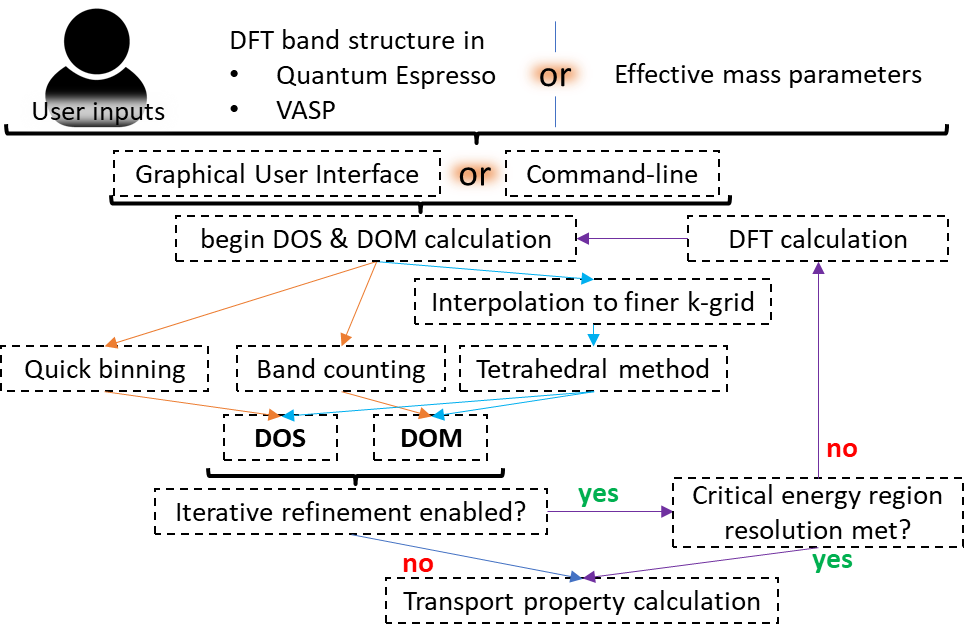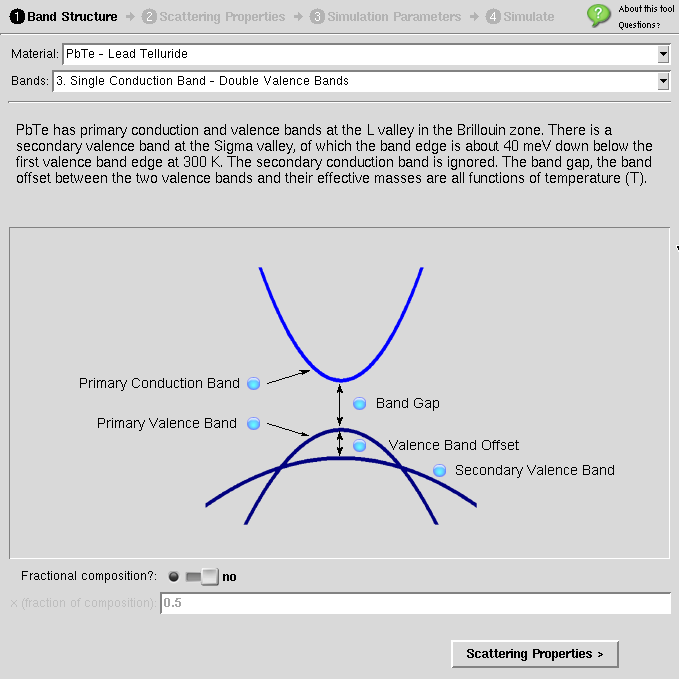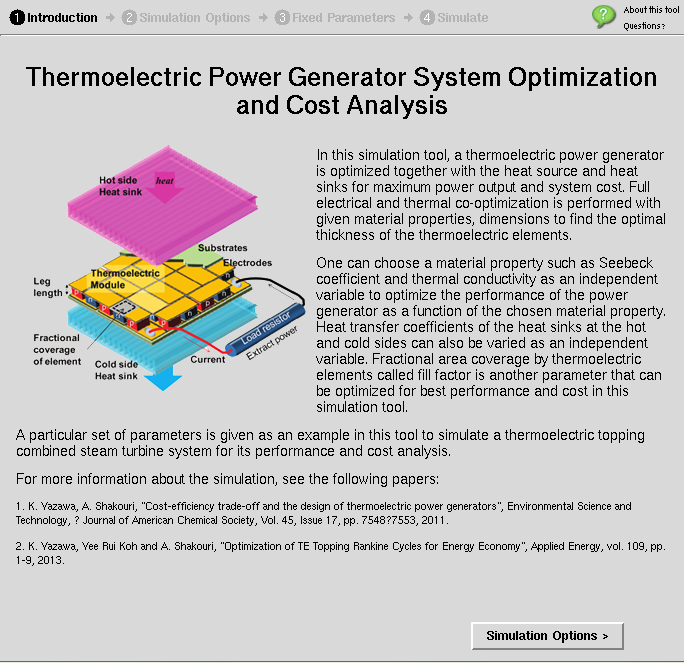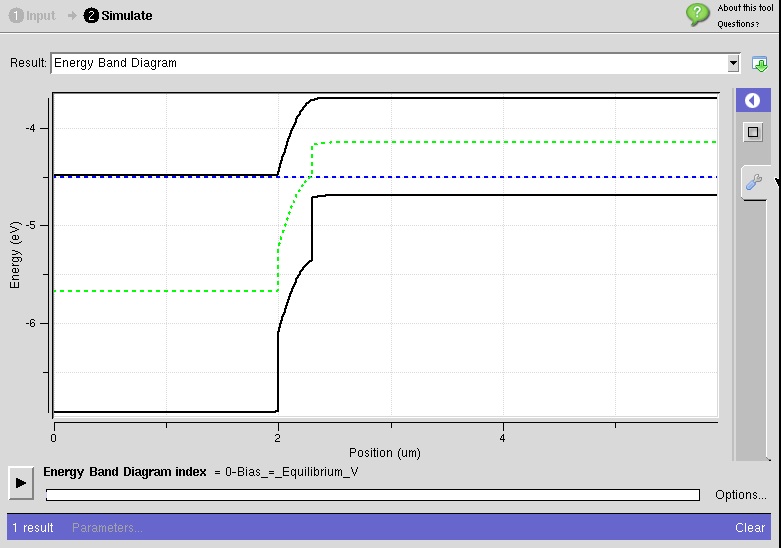 |
ADEPT 2
-
ADEPT/F solves Poisson's equation coupled with the hole and electron continuity equations in one spatial dimension in compositionally nonuniform semiconductors. It was originally written to model solar cells fabricated from a wide variety of materials, including amorphous silicon, copper indium diselenide, and cadmium telluride. However, since material parameters (band gap, mobility, etc.) can be input by the user, devices fabricated from any material for which these parameters are known can be modeled. Dark I-V, light I-V, and spectral response of solar cells (or any two terminal device) can be computed. Plots of many internal parameters, such as carrier density, recombination, electric field, etc., can be plotted at any operating point. Homostructures and heterostructures, both abrupt and graded, can be modeled. Solar cell material systems modeled include ZnO/CdS/CIS, ZnO/CdS/CIGS, CdS/CdTe, a-Si, Si, AlGaAs/GaAs, GaSb, InP, and several others. The new Frozen Potential Approach is capable of simulating cases where the Principle of Superposition fails.
- solar cells
- device simulation
|
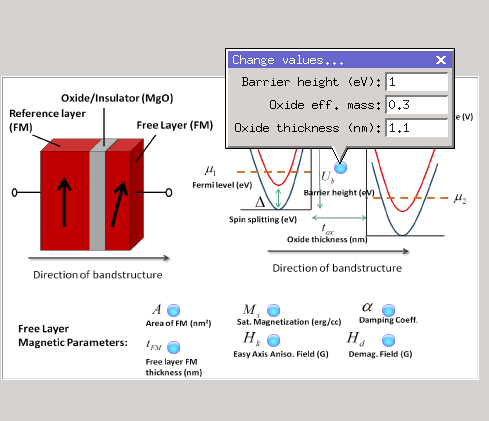 |
MTJLab
-
The Magnetic Tunnel Junction (MTJ) is a spintronic device that is gaining attention in hybrid- and post-silicon memory and logic circuit designs. The device consists of two thin film ferromagnets separated by a nanometer thin oxide layer. The resistance of this device depends on the relative angle between the magnetizations of the two ferromagnets, and can be used to create a memory device by storing information as the relative configuration (anti-parallel and parallel) of the angle. Using the phenomena of spin transfer torque, this angle can be controlled and used to write information as well, making MTJ capable of working as a solid state non-volatile memory. Other features like low power operation, radiation hardening, high projected relatibility and size scalability make MTJs a candidate for "universal memory". We present a Non-Equilibrium Green’s Function (NEGF) based quantum transport simulator that calculates critical transport properties of an MTJ viz. Parallel and Anti-Parallel Resistances, Tunneling Magneto-Resistance (TMR) and Spin Transfer Torque (STT, both in-plane and out of the plane), using material parameters and geometric dimensions of an MTJ device as inputs. The underlying model is the first model to quantitatively benchmark multiple experimental data and was published in a peer reviewed journal.
- Magnetic tunnel junction
- magnetoelectric devices
- NEGF
- spin logic
- spin transport
- spintronics
|
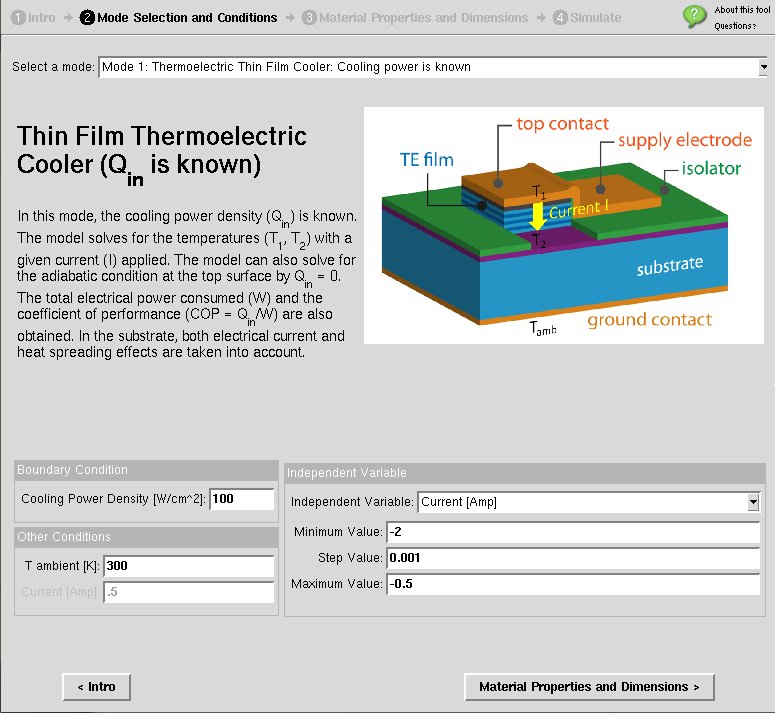 |
Thermo
-
A thermoelectric (TE) device is a tool used to convert heat into electricity and vice versa. In the power generation mode, where a TE device is attached onto a hot surface, thermal energy comes into the TE device from the hot surface, as the other side of the TE device is cooler than the hot side. An electric voltage is then created in the TE device by the thermoelectric principle called Seebeck effect. This voltage can be connected to an external load to do a useful work. In the cooling/heating mode, an electric current is injected into a TE device. When the electric current flows through the interfaces, thermal energy is either absorbed from lattice to charge carriers (cooling), or dissipated from charge carriers to lattice (heating) by another thermoelectric principle called Peltier effect. This way, an active cooling/heating of electronic/optoelectronic devices can be achieved. This simulation tool is intended to simulate the operations of TE devices under various circumstances and boundary conditions. Both micro-scale thin-film TE devices and large-scale multi-element TE modules can be simulated. One of the advantages of this tool is that users can choose an independent variable such as design parameters of the TE device, and simulation conditions, and simulate the device performances as a function of the independent variable. This is very useful for users to optimize their TE device design suitable for the operating conditions.
- energy conversion
- nanoelectronics
- Semiconductor Device Modeling and Design
- thermoelectric
- thermoelectric cooler
- thermoelectric generator
|
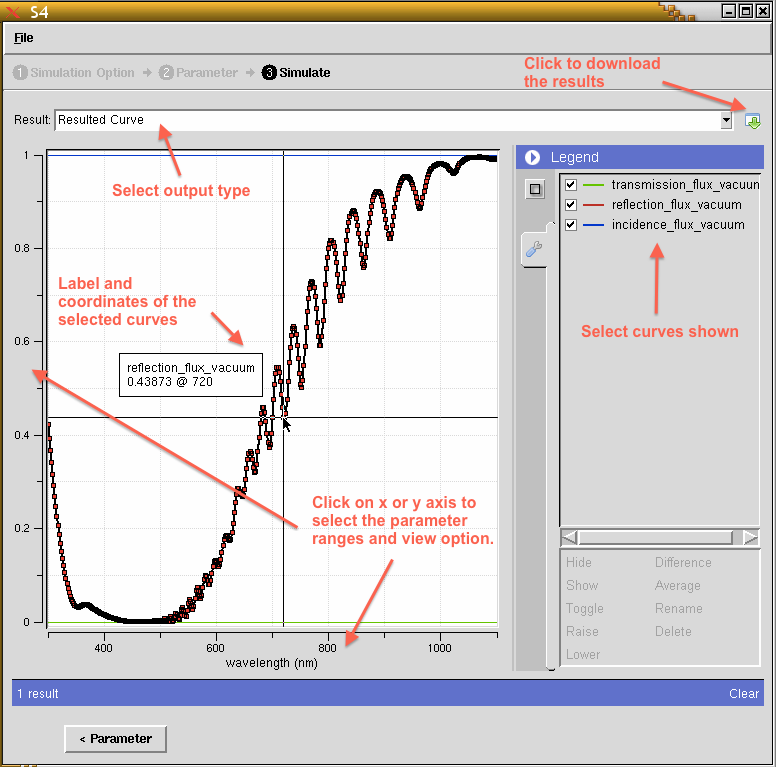 |
S4
-
S4 is a frequency domain code to solve layered periodic structures. Internally, it uses Rigorous Coupled Wave Analysis (RCWA; also called the Fourier Modal Method (FMM)) and the S-matrix algorithm. S4 was developed by Victor Liu of the Fan Group in the Stanford Electrical Engineering Department. http://www.stanford.edu/group/fan/S4/#main The S4sim Nanohub tool was developed at Purdue University as an analysis of optical propagation in the generalized 3D structure much more quickly than many alternatives. However, the original tool is hard to use. So the goal is to make it more accessible, especially for experimentalists in PV community.This tool allowed the user to click into the parameters including the number of layers and material for each layer and to define a multi-layers structure. The original complicated coding process was totally replaced. This tool then output data for the structure, which helped making the structure clear.
- Fourier Modal Method
- Maxwell's equations
- multilayers
- nanophotonics
- RCWA
- rigorous coupled-wave analysis
|
 |
Senstran
-
BioSensorLab is a tool to evaluate and predict the performance parameters of a label-free, electronic biosensor (see figure). The sensor basically consist of a field effect device, whose surface is functionalized with capture probe (receptor) molecules. Some of the target molecules, which are introduced to the system, diffuse through the solution and reach the field effect device and get captured by the receptors thereby binding them close to the surface. Many bio-molecules carry an electrostatic charge under normal physiological conditions. For example, DNA is negatively charged while the net charge of a protein molecule depends on the pH of the solution. The coulomb interaction between the charge of the target bio-molecule and the field effect device can result in a change in conductivity of the latter.
- nano/bio
- biosensor
- biology
|
